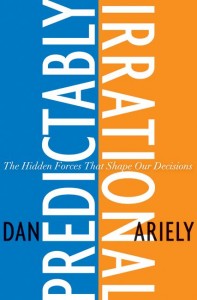Dan Ariely on Pricing and Perception

- Online version for $59 – wow. Quite expensive but arguably the Economist is a quite good periodical and perhaps that’s a good deal.
- Print version for $125 – more wow. In comparison, that’s expensive indeed and in this age of digital on-demand media why buy the hard copy – which requires checking the mailbox and reading in hard copy and so on…
- Both Print and Online versions for $125 – whoa, now both versions for the same price as the print offering. Makes you wonder who in the world would buy the print-only version.
Dan Ariely tried to figure out the relative value by presenting these options to his graduate students. Here are the results:
16% chose online only. 84% wanted the combo deal, and nobody wanted the print-only version. Interesting results, but it makes you wonder what the economist was thinking in creating an offering that no one wanted. Were the marketing people asleep?
Dan then re-printed the offering – deleting the middle option print-only – and the results were that the first $59 option became the most popular by far and the combo deal the least popular. In consumer perception, by offering the combo deal at the same price as a less desirable option, the higher priced option became more valuable. It was only the comparison that led people to choose the $125 option. Think about that next time you price options in the world of selling when no one is buying.


